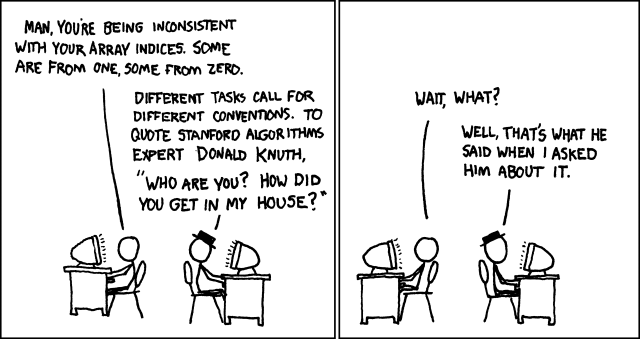 Chasing the Check mark
Chasing the Check mark
- 3 mins 
Throughout my studies, I have often found myself writing a block of code and wondering whether I am using the, “Right,” style. Or perhaps, maybe somewhere out there, is the elusive, “One style to rule them all,” and in the darkness that style binds my code into limitless power! These ideas, however, are fruitless. By rummaging through the internet, and now validated through my software engineering course, the truth has been revealed to me. The simple fact is consistency is the best style. Now, that is not to say a consistently horrendous style gets two thumbs way up. Rather a well-defined standard of consistency helps improve read-ability, and as I am coming to find, even reduce the occurrence of errors. This in turn leads to an improvement in functionality, as well as boosting productivity. The road ahead may be arduous when learning new technologies in conjunction with adapting to new standards, however legends are not born, legends are forged in the painful fire of experience.
Cut to the chase

Coding is now coding++, i.e., coding has a new sub-goal that has turned into somewhat of a game. The act of getting every line of code to pass a series of tests, resulting in a shiny green checkmark in the corner of the IDE editor window releases a nominal amount of dopamine. Seeing that conifer colored angle is like beating a level in Super Mario (please don’t throw anything after reading that simile). That question I was asking myself, the one about the right style, has all but sublimed into vapor. Now I know that red means, “chickity check yourself before you wreck yourself,” and green means that all code currently adheres to the given standard and no errors were detected, in other words, “nailed it!” The search for style now resides in a different universe. Instead of contemplating the aesthetics of style, I now wonder about the elegance of my own personal style in regards to approaching and solving problems. My paradigm of style has shifted for the better, all thanks to coding standards.
Multiple standards
I am beginning to realize that a crucial trait in becoming a software engineer is being able to seamlessly adapt to multiple standards regarding separate projects. E.g., on the one hand, at the time of writing this essay, I have one course where we code in a unix environment via the terminal. Writing code is done primarily through vim while adhering to the strict standards defined by the professor. On the other hand, another course where I am writing javascript to be utilized in web-based applications, accomplished through the intricate IntelliJ IDEA in conjunction with git and GitHub. Thus I have two unique programming paradigms to juggle. Being a proficient software engineer, from my point of view, means having an open mind, as well as an agile and dynamic approach to acclimating to diverse project standards.
010011100010000 hours
Every hour I spend honing skills, every hour I spend learning new technologies and concepts, every hour thinking of the most efficient way to solve a problem, every hour learning an IDE, every hour accumulates. With this in mind, I am excited about what the future holds. I am also (surprisingly) excited about working within a coding standard, because it means I am participating in something that is bigger than myself. The use of these standards while attending university gives me a glimpse into a very exciting future where I will be working with other passionate individuals to build the latest and greatest software and technologies.
